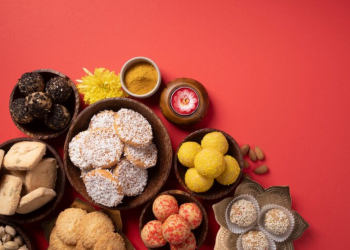Meat cuts refer to the various parts of an animal that are prepared and sold by butchers. Each part of the animal yields different cuts, varying in texture, flavor, and culinary uses. Understanding these cuts is crucial for selecting the right type of meat for various cooking methods. Butchery, the art of cutting and preparing meat, plays a key role in defining the quality and characteristics of different cuts.
The Relationship Between Meat Cuts and Quality
The quality of meat cuts is influenced by factors such as the animal’s breed, diet, and how it was raised, with free range butchery often yielding higher quality meat. Free-range animals typically have better muscle quality due to more natural living conditions, affecting the texture and flavor of the meat. The skill of the butcher also contributes significantly to the quality, as proper cutting techniques can enhance the meat’s tenderness and cooking properties.
Exploring Beef Cuts
Overview of Popular Beef Cuts
Popular beef cuts include ribeye, sirloin, tenderloin, and brisket, each offering unique flavors and textures. Ribeye is known for its marbling and richness, while sirloin offers a balance of flavor and tenderness. Tenderloin, one of the most tender cuts, is ideal for high-quality steaks. Brisket, with its dense texture, is perfect for slow cooking methods.
How Quality Varies with Different Cuts of Beef
The quality of beef cuts varies based on marbling, age, and butchery practices. Marbling, the amount of intramuscular fat, is a key determinant of flavor and tenderness. Age affects the meat’s texture, with younger animals typically providing more tender meat. Free range butchery, where animals are raised in more humane conditions, often results in higher quality meat due to the animals’ healthier lifestyles and diet.
Best Uses for Each Cut in Cooking
Each beef cut is suited to specific cooking methods. Ribeye steaks are best grilled or pan-seared to enhance their rich flavor. Sirloin can be grilled, broiled, or pan-fried. Tenderloin, being extremely tender, is ideal for quick cooking methods like grilling or broiling. Brisket, due to its toughness, benefits from slow cooking methods like braising or slow roasting.
Delving into Pork Cuts
Identifying Various Cuts of Pork and Their Characteristics
Pork cuts include loin, chops, shoulder (Boston butt), and belly. Pork loin is lean and tender, suitable for roasting or slicing into chops. Pork chops, cut from the loin, are versatile and can be grilled, broiled, or pan-fried. The shoulder is ideal for slow cooking, yielding flavorful and tender meat. Pork belly, known for its fat content, is excellent for slow roasting or making bacon.
Cooking Recommendations for Different Pork Cuts
Loin and chops are best cooked using methods that preserve their tenderness, such as grilling or roasting. Pork shoulder is perfect for slow cooking techniques like braising or smoking, which break down the meat’s connective tissues. Pork belly, rich in fat, can be slow-roasted to achieve a crispy exterior and tender interior.
Understanding Poultry Cuts
Common Cuts of Chicken and Other Poultry
Poultry, particularly chicken, is divided into various cuts that are used in a wide range of recipes. The most common cuts include the breast, thighs, drumsticks, and wings. Chicken breasts are lean and versatile, perfect for grilling, baking, or frying. Thighs and drumsticks, being richer in flavor due to higher fat content, are ideal for slow-cooking methods. Wings, with their skin and bone, are popular in recipes that require roasting or frying.
Quality Indicators in Poultry Cuts
Quality indicators in poultry cuts include the color of the meat, firmness, and the absence of any unpleasant odor. Fresh poultry should have a consistent color without any grayish tones. The texture should be firm, not slimy, and the skin should be intact without tears. Free-range and organic poultry often have better quality due to healthier raising practices and diets.
Lamb and Other Red Meat Cuts
Exploring Cuts of Lamb and Other Red Meats
Lamb is prized for its tenderness and rich flavor, with popular cuts including the leg, rack, shoulder, and loin chops. Other red meats, such as venison and bison, offer unique flavors and textures, with cuts similar to beef like steaks, roasts, and ground meat.
Quality Considerations in Lamb and Exotic Meats
For lamb and exotic meats, quality considerations involve the age of the animal, marbling, and color. Young lamb tends to be more tender with a subtle flavor. Marbling in lamb and other red meats contributes to juiciness and flavor. The meat should have a vibrant color, indicative of freshness.
Selecting Quality Meats: Tips and Tricks
How to Identify High-Quality Meats at the Store or Butcher
To identify high-quality meats, look for a consistent color, firm texture, and a fresh smell. For beef and lamb, a good level of marbling indicates quality. At a butcher shop, you can also ask about the source of the meat, as locally sourced, free-range, and grass-fed meats are often of higher quality.
Understanding Meat Grading and Labeling
Meat grading is a voluntary process that assesses the quality based on factors like marbling and age. Labels such as USDA Prime, Choice, or Select in beef, or similar grading in other meats, can guide you in understanding the quality. Organic, grass-fed, and free-range labels also provide information about the rearing practices, which can impact the meat’s quality.
Tips for Selecting the Best Cut for Your Needs
Selecting the best cut depends on your cooking method and flavor preferences. For quick cooking, choose leaner cuts like chicken breasts or beef tenderloin. For richer flavor and slow cooking, opt for cuts with more fat and connective tissue, like beef brisket or pork shoulder. Don’t hesitate to ask your butcher for recommendations based on your culinary needs.
The Role of Aging in Meat Quality
Dry Aging vs. Wet Aging: Effects on Meat Cuts
Aging is a crucial process in enhancing the quality of meat. The two primary methods are dry aging and wet aging. Dry aging involves hanging meat cuts in a controlled, open-air environment to intensify their flavor and tenderize the meat over time. This process allows for moisture evaporation and enzymatic breakdown, leading to a more concentrated flavor and tender texture. Wet aging, on the other hand, involves vacuum-sealing the meat in plastic and letting it age in its own juices, which tenderizes the meat without intensifying the flavor as much as dry aging.
How Aging Impacts Flavor and Texture
The aging process significantly impacts both the flavor and texture of meat. Dry-aged meat develops a rich, complex flavor profile and a tender, almost buttery texture. Wet-aged meat tends to retain more of its original moisture content, resulting in a tender but less flavorful outcome compared to dry aging. The choice between dry and wet aging depends on personal preference and the desired culinary outcome.
Sustainability and Ethical Considerations in Meat Selection
Choosing Sustainable and Ethically Sourced Meats
Sustainable and ethically sourced meats are becoming increasingly important to consumers. Sustainable meat production involves practices that are environmentally friendly, humane to animals, and socially responsible. Ethically sourced meats often come from free-range or grass-fed animals and from farms that prioritize animal welfare and environmental sustainability.
Impact of Meat Production and Sourcing on Quality
The way meat is produced and sourced can have a significant impact on its quality. Meats from animals raised in stress-free environments, fed natural diets, and given ample space to roam tend to be of higher quality. These practices not only contribute to the ethical treatment of animals but also to the production of meat that is richer in flavor and nutrients.
Pairing Meat Cuts with Cooking Methods
Matching Cooking Techniques to Different Cuts
Different meat cuts are best suited to specific cooking techniques. Tougher cuts like beef brisket and pork shoulder are ideal for slow cooking methods like braising, which tenderize the meat. Leaner cuts like chicken breast and pork tenderloin are better suited for quicker cooking methods like grilling or pan-searing. Fattier cuts like ribeye steaks and lamb chops benefit from high-heat cooking methods that render the fat and intensify flavor.
Tips for Maximizing Flavor and Tenderness
To maximize flavor and tenderness, it’s important to match the cut of meat with the right seasoning and cooking technique. Marinating can infuse flavor and tenderize certain cuts. Allowing meat to reach room temperature before cooking and letting it rest after cooking helps in retaining juices and tenderness. Understanding the grain of the meat is also crucial for achieving the best texture, particularly when slicing.
Conclusion
Choosing quality meats involves considering factors like aging processes, ethical and sustainable sourcing, and the appropriate cooking techniques for each cut. With the increasing focus on food quality and sustainability, being informed about where and how meat is sourced, as well as how it’s prepared, is vital. This understanding not only enhances the dining experience but also supports more responsible and sustainable meat consumption.








